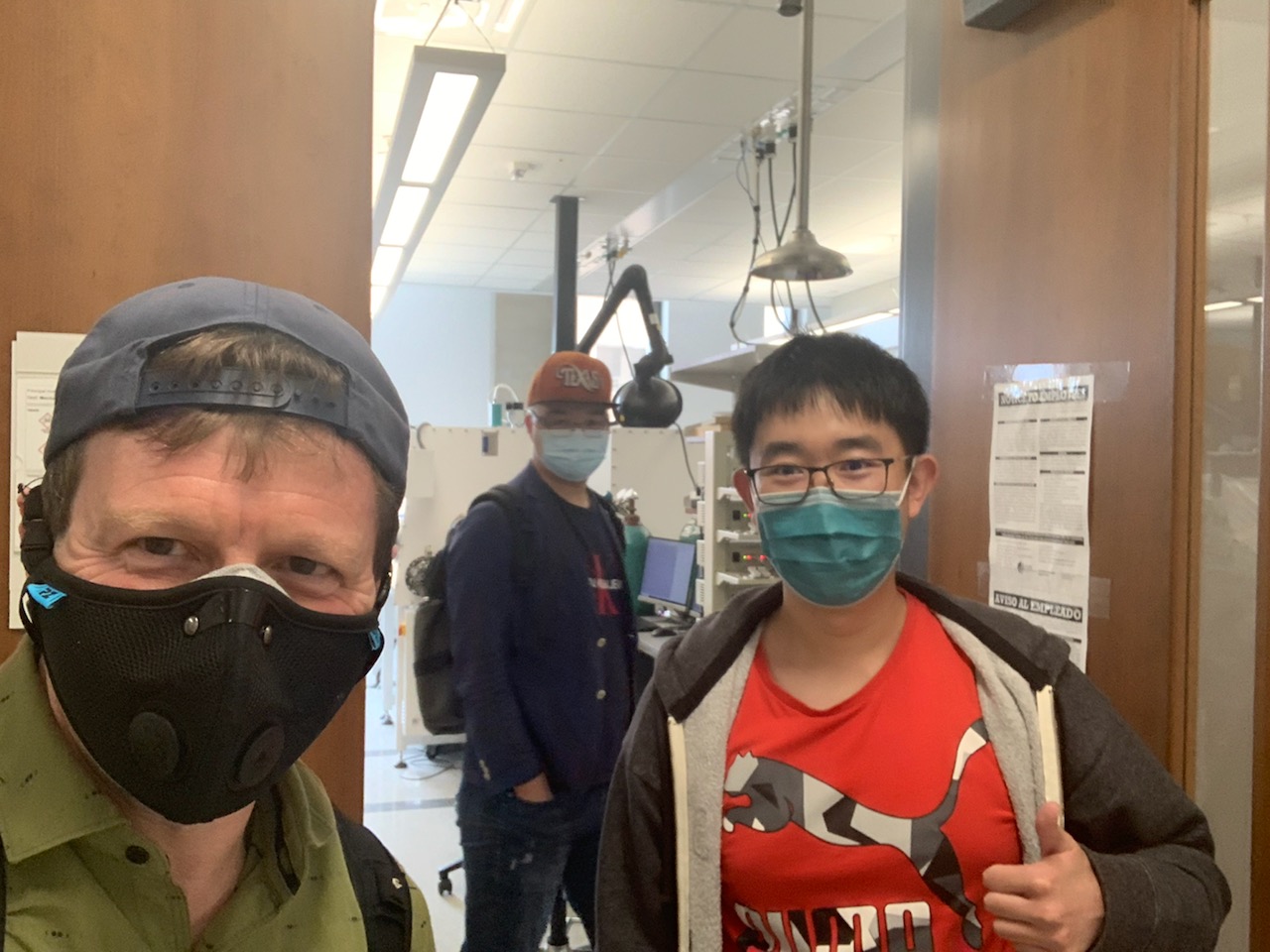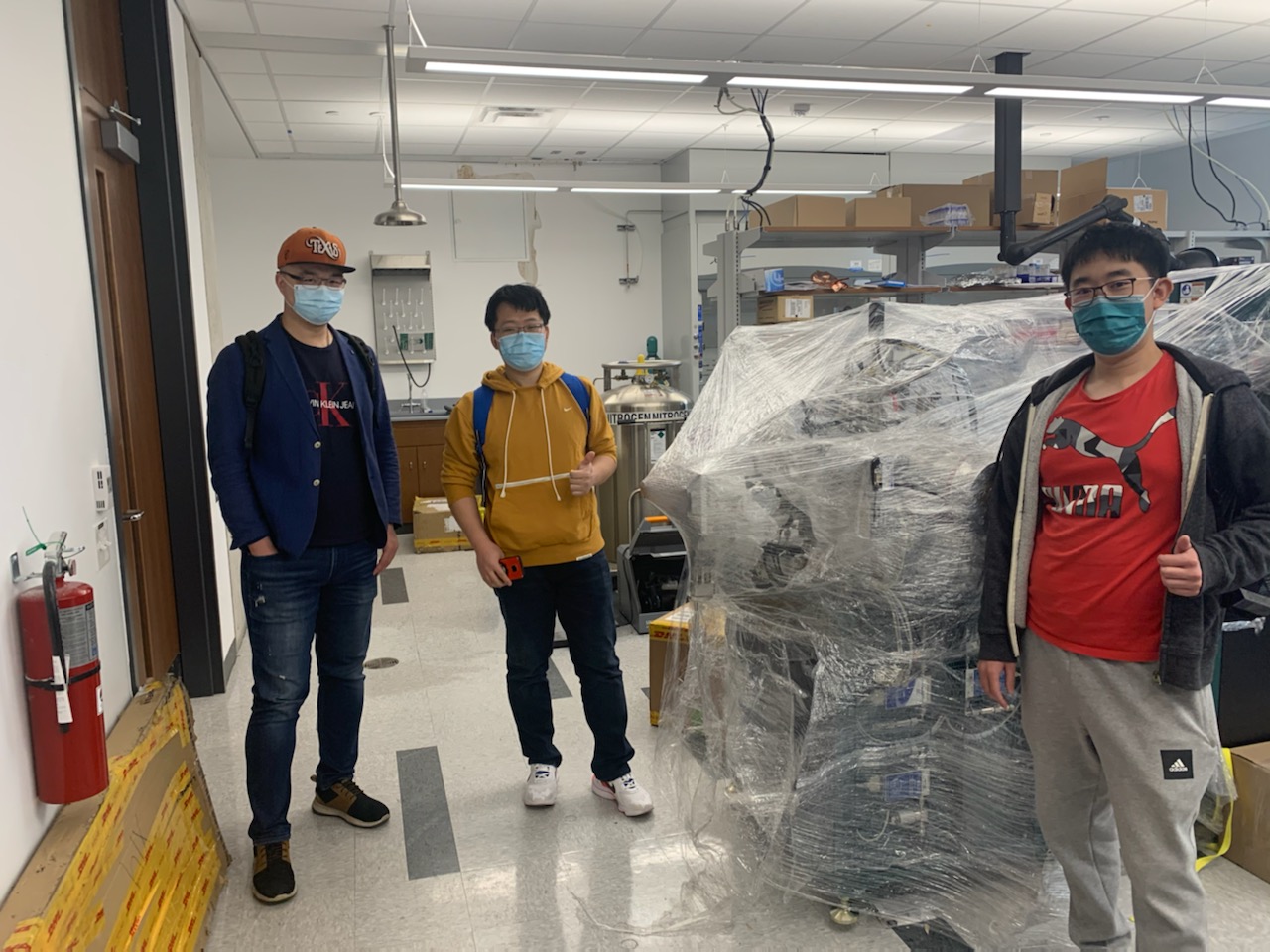Lithium-ion batteries power devices that billions of people use every day — from electric cars to smartphones and laptops. The rising demand for these batteries created a need for alternative technologies with potentially lower material costs.
A promising class of batteries based on sodium and potassium ions offer new options, especially for uses that don’t require maximum energy and power. But safety and longevity issues have held back their widespread commercial adoption.
Engineers at The University of Texas at Austin have made multiple discoveries in recent years that they say will bring these "beyond lithium" batteries closer to reality, with several major breakthroughs in 2020.
"If everyone is driving vehicles powered by lithium-ion batteries, short-term supply disruptions could cause major price spikes for materials, akin to the oil shocks of the 1970s,” said Dave Mitlin, a professor in the Cockrell School’s Walker Department of Mechanical. “It would be a nice relief valve to have sodium and potassium batteries for applications like grid storage and other stationary uses, where absolute performance is less important than the amount of energy per dollar."
Because of the widespread availability and lower cost of materials, both sodium and potassium batteries could be less expensive to produce than lithium-ion batteries. Mitlin published more than a dozen papers in 2020 focused on the science of these alternative batteries and creating a path to commercialize them.
David Mitlin and his graduate students prepare to unpack a new high-vacuum deposition tool.


While promising in principle, both sodium and potassium are more reactive that lithium, resulting in severe problems with corrosion — or rusting — inside the cells. Some degree of corrosion is a natural part of the battery-charging process, but when it is not controlled it can lead to the formation of metal dendrites — tiny tree-like structures that form on the anode, the positively charged electrodes of the battery. The formation and growth of dendrites can create a host of negative consequences, including catastrophic electrical shorting resulting in fires or even explosions. Unless the corrosion-dendrite problem is fully addressed, commercialization remains impossible.
“It's like having a layer of rust on a steel bridge,” Mitlin said. “There will always be some rust there, but you can’t have it growing in an uncontrolled, non-uniform manner. That makes the bridge, or in this case, the battery, unsafe."
Two of Mitlin's recent papers, both published in Advanced Materials, focus on the relationship between corrosion of the electrolyte — the liquid inside the battery that allows the charge-carrying ions to shuffle between the anode and the cathode during use — and dendrite growth in potassium metal anodes. The first paper focused on the importance of the geometry and chemistry of current collectors – the electrical conductors between electrodes and external circuits. The second paper focused on the role of collector geometry on electrolyte wetting. The wetting of both the metal and the electrolyte, was shown to be critical in enhancing the cell lifetime and suppressing dendrites.
Complete electrolyte wetting — spreading the electrolyte evenly on the surface — is critical because it creates a uniform path for the ions, while poor wetting can lead to dendrites. This concept has been refined over many decades for lithium-ion batteries, but it remains a major challenge for emerging battery types. By improving wetting and using a rougher current collector surface, Mitlin’s group increased performance and safety of potassium batteries.
Since dendrites present problems for batteries of all types — including commercial lithium-ion batteries — these discoveries have broad implications for the industry.
“Having this rough wetting surface gives battery design engineers a fairly major and straightforward tool to prevent dendrites in lithium, sodium and potassium batteries,” Mitlin said. “At the same time, this research tells engineers this is something they need to worry about. If you don't get good electrolyte and metal wetting, you’re going to have dendrites.”
Mitlin's work is the latest example of the long history of battery innovation in the Cockrell School, most notably in the research of Nobel Prize winner John Goodenough. In 2020 alone, Texas Engineers made several important battery discoveries, in addition to Mitlin's work:
- A team led by Arumugam Manthiram created a lithium-ion battery free of the expensive and controversial element cobalt, without sacrificing performance.
- Manthiram also made a significant breakthrough in the quest to commercialize lithium-sulfur batteries, which have been hailed as the next big step in battery technology, promising significantly longer use for everything from cellphones to electric vehicles on a single charge, while being more environmentally sustainable to produce than current lithium-ion batteries.
- Associate professor Guihua Yu led a research team that created a room-temperature, liquid metal battery, which combines the increased capacity of solid-state batteries with the efficiency and long life of liquid batteries.
- Yu and his team also solved a decades-old mystery about metal oxides that show promise as key materials for the next generation of lithium-ion batteries because of their mysterious ability to store significantly more energy than should be possible.
Manthiram and Yu helped recruit Mitlin to UT in 2019. He moved from Clarkson University in upstate New York, after a decade at the University of Alberta in Canada. After graduating from the University of California, Berkeley, Mitlin was a Director's Postdoctoral Fellow at Los Alamos National Laboratory.
Mitlin called Texas the energy capital of the U.S., citing the state's status as an emerging leader in renewable energy in addition to its deep oil-and-gas roots. Mitlin’s battery research is part of a long-term partnership between his group and Jagjit Nanda of Oak Ridge National Laboratory, John Watt of Los Alamos National Laboratory and Jorge Anibal Boscoboinik of Brookhaven National Laboratory.
Mitlin has the typical engineering brain; he is motivated by the desire to solve big problems. And in his mind, creating inexpensive, renewable energy represents one of the world’s most important, and vexing, issues.
"Energy storage and generation are, in my book, one of the biggest non-biological, hard science problems out there,” Mitlin said. “For example, lack of potable water is a major global problem, but it’s also an energy problem. If there is access to cheap energy, it's much easier to clean existing water supplies."







